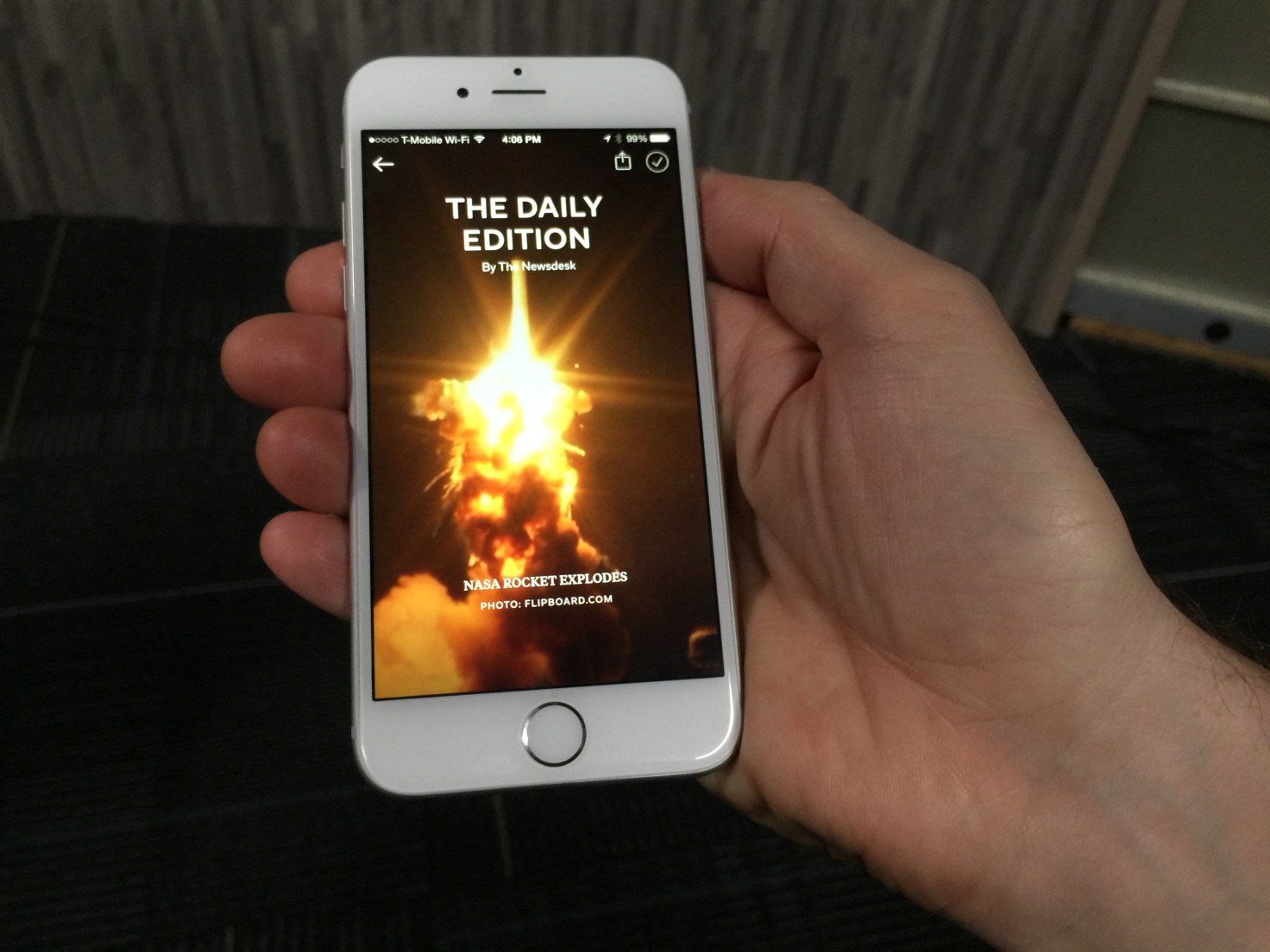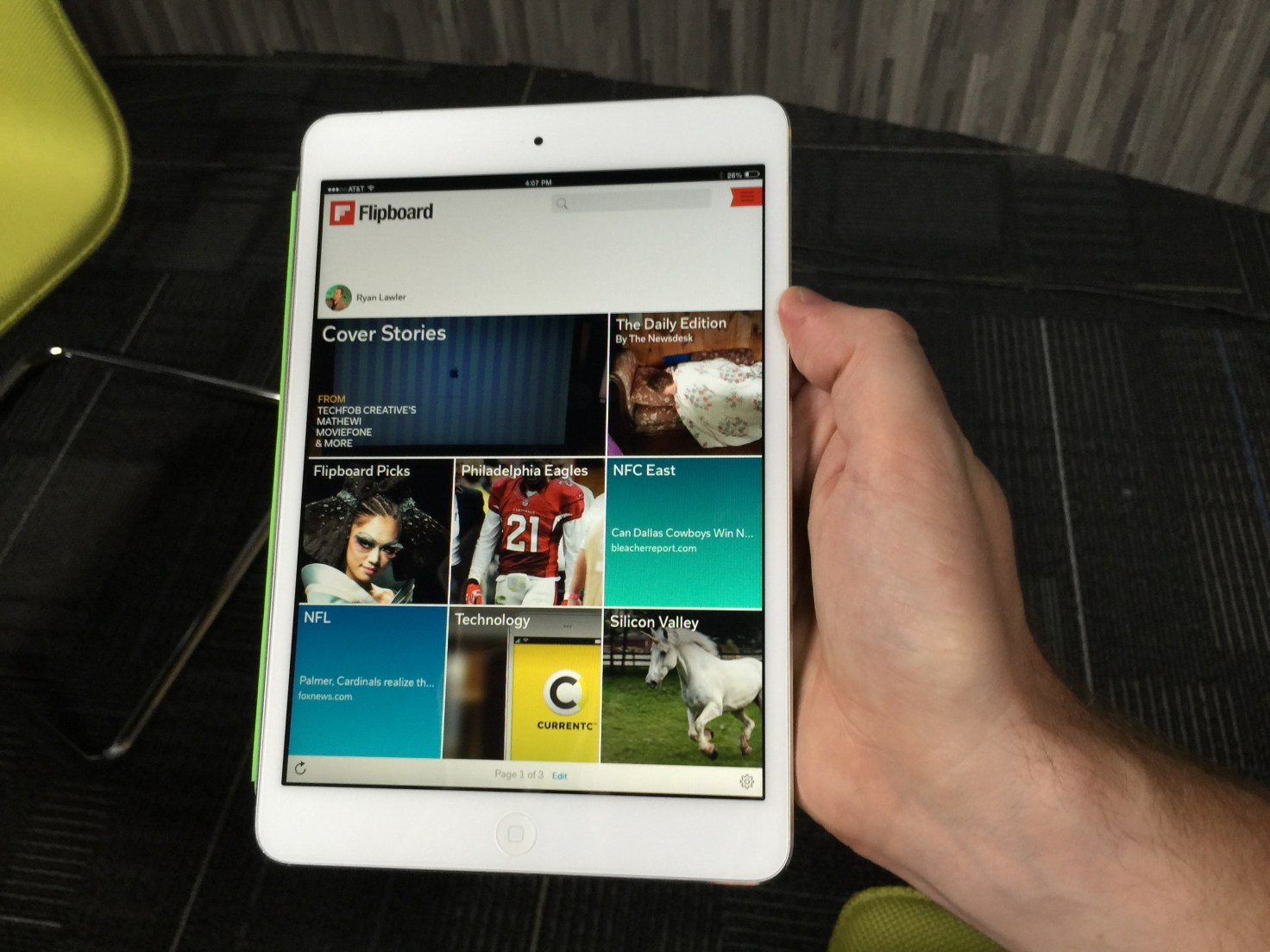Flipboard has been working hard over the last few years to build an app that makes reading stories on mobile and tablet devices as engaging as flipping through a magazine. With the latest version of its app, users will be able to find and discover content that is relevant to their interests, through the introduction of topics they can follow. Already, Flipboard has done a good job of getting — and keeping — readers’ attention. It now has more than 100 million readers who have downloaded the app, and is adding 250,000 more each day. Those readers are flipping about 8 billion pages per month, and that number continues to grow. But the new app is aimed at keeping those users engaged through personalization.
When you first open up Flipboard 3.0, the app guides you through the process of picking a series of topics you will receive updates on. It asks “What are you interested in?” and provides a wide range of suggestions that vary from high-level content based around categories like “Technology” down to more granular topics such as “iPad apps.”
Once you’ve chosen several topics of interest, the app opens up to unveil a front page that features stories from multiple sources you can flip through. Stories are tagged by content provider as well as by topic, allowing users to drill down and see more content related to each. You can also choose to follow stories by source or by topic, which would provide even more content served up to users.
At launch, Flipboard will have more than 30,000 different topics to choose from, so there’s something for everyone. And the ability to easily add topics over time could keep casual Flipboard users keep coming back for more as the app becomes more personalized and relevant to them.
Users can click through to see which topics, people, and accounts they follow and drill down on stories shared there. Or they can search for particular topics. And even if readers are following hundreds of topics, the app will work to showcase the most relevant or interesting topics on any given day, according to Flipboard co-founder and CEO Mike McCue.
But it’s not all going to be algorithmically programmed. In addition to its topics, the app is also adding a “Daily Edition” of content that has been selected by Flipboard editors. It will be released every day at 7:00 am and will feature all the biggest news from the previous day, as well as a daily photo and “parting GIF” for readers.

Moving Beyond Reader Curation
For Flipboard, the move to a topic-following model is a departure from its previous personalization efforts. Last year, the company released a big app update that enabled users to create and subscribe to virtual magazines based on their own interests. By doing so, they could curate stories from multiple different sources and present it in a unified fashion. Readers, meanwhile, benefitted by being able to subscribe to magazines created by other like-minded users to discover content they might not have seen otherwise.
Magazines have been incredibly popular on Flipboard: The company says there have been more than 10 million of them created and curated by readers since launch. They can range from having just a few followers to hundreds and thousands of followers — and the top magazines have generated tens of millions of page flips from readers.
That feature also added a new potential revenue stream by enabling brands and retailers to create shoppable magazines and catalogs of products for sale. That’s on top of advertising CPMs that are closer to print publications than digital properties.
That said, Flipboard’s magazine model wasn’t perfect. After all, it relies on readers to keep updating their magazines over time in order to keep providing fresh content to others. Furthermore, each magazine reflects the interests of the creator or creators and may not be exactly what a reader is looking for.

Zite Acquisition Bears Fruit
The update is designed to improve upon the current experience with a more personalized feed, which users create by following different topics of interest to them. That ensures readers will be kept up to date on the news that’s important to them, without having to rely on another reader to curate a magazine for them.
McCue says the new version blends people-powered curation with algorithmic curation. For that, the app builds on its magazine creation tools and adds features from a couple of acquisitions Flipboard made over the last few years.
The first was its Cover Stories feature, which came about with help from technology it acquired as part of its purchase of Ellerdale several years ago. That gave Flipboard the ability to structure and display content more like a magazine.
It’s the more recent acquisition of Zite which helps to power the app’s new topic-centric following model, however. Zite was acquired from CNN earlier this year, and ever since the combined engineering teams have been working on ways to make Flipboard more personalized and more engaging.
It’s Zite’s technology that is being used to identify and categorize the topics that users can subscribe to. It can do that without its readers building magazines, which opens up a whole lot of new topics and content for readers to discover.
But that’s the whole point. Finding more relevant content is key to Flipboard’s business model, after all.
The more readers flip and the more engaged they are in its magazine-like experience, the more ads they see. The more ads they see, the more money Flipboard makes. And considering that Flipboard has raised more than $160 million since being founded, it’ll need a lot of flips to justify that funding. The good news is, whatever it’s done so far seems to be working.

Source: http://techcrunch.com/2014/10/29/flipboard-3-0/









